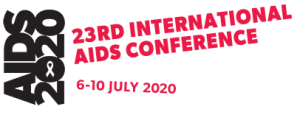By Austin Okumu
There continues to be various issues associated with HIV & AIDS that need to be explored in-depth. One of these issues concerns HIV disclosure, which refers to when someone living with HIV tells another person their HIV status. Although this comes with a sense of relief and potential support, it also bears many challenges – ones that can affect self-esteem and cause fear. As a result of the negative part of status disclosure, people living with HIV (PLHIV) can be reluctant to disclosing their status[1]. Moreover, HIV disclosure can also be challenging when someone enters into a serodiscordant relationship. This refers to a relationship that involves a person who is HIV positive and another person who is HIV negative[2]. This article will explore why specifically youth are not disclosing their HIV status as well as the challenges and benefits to status disclosure.
Why is Youth Not Disclosing?
When addressing local and global HIV prevention efforts, understanding serostatus disclosure to sexual partners also needs to be included. This is because a large number of children living with HIV are entering adolescence and becoming sexually active[1]. Moreover, young people are engaging in sex, including condomless sex, with same-age peers who are living with HIV and this can be problematic if there has been no act of HIV disclosure. However, disclosure to PLHIV, can also be risky, and carries many threats of rejection, humiliation, and even sometimes violence. The fear of potentially adverse outcomes, such as rejection and stigma, can amplify transmission rates and this is seen in the fact that many adolescents and young people are choosing not to disclose their status despite continuing to engage in sexual activity[2],[3].
Numerous factors are associated with lack of disclosure which is demonstrated in literature. Lack of disclosure to partners has consistently been affected by sexual activity. For instance, YPLHIV are less likely to disclose to casual sex partners[4] whereas regular sexual activity amongst long-term couples acts as a reason for HIV discordance. However, inherent resistance to HIV in some individuals may be another reason for HIV discordance[5].
[1] Melvin D, Donaghy S. (2014) Talking to children about HIV in healthcare settings.
[2] HIV in Young People Network (HYPNET), Children’s HIV Association CHIVA / British Association of Sexual Health and HIV (BASSH) / British HIV Association BHIVA (2011) Guidance on the management of sexual and reproductive Health of adolescents with HIV.
[3] Corrigan, P., Kosyluk, K. and Rüsch, N. (2013). Reducing Self-Stigma by Coming Out Proud. American Journal of Public Health, 103(5), pp.794-800.
[4] Evangeli M, Wroe L. (2016) HIV disclosure anxiety: A systematic review and theoretical synthesis.
[5] Pettifor, A., Bekker, L., Hosek, S., DiClemente, R., Rosenberg, M., Bull, S., Allison, S., Delany-Moretlwe, S., Kapogiannis, B. and Cowan, F. (2013). Preventing HIV Among Young People. JAIDS Journal of Acquired Immune Deficiency Syndromes, 63, pp.S155-S160.
Challenges and Benefits of Disclosing HIV Status
In deciding as to whether or not to disclose, there is a considerable amount of evidence demonstrating the barriers that individuals experience, ones that are often fraught with emotional challenges. Currently, literature suggests that the majority of children and youth were only disclosed to during a health facility consultation where they were told the names of the drugs they were to take or were currently taking[1]. Due to this, it is recommended that children and young people are told their serostatus early so that they are prepared for the outcome. HIV disclosure is also influenced by stigma. This is because disclosing an HIV status might increase the likelihood of being alienated by peers and so it may also carry greater risks for many young people which to them, could outweigh any perceived benefits and overall gains[2]. HIV-related stigma, by its very definition, accentuates disapproval and can have negative effects on self-esteem and social support[3]. Despite the negatives, there remains benefits to status disclosure. Some of these include a sense of relief, fostering closeness to loved ones and a feeling of empowerment. Important benefits that should be noted is that by disclosing, YPLHIV can receive effective treatment and have a higher chance of being supported by loved ones and partners1.
Current literature on the topic of young people’s sexual health and behaviors explores the various factors that impact their lives as well as their relationships. It is suggested that disclosure is not a one-off event and is rather a sequential process that requires enabling opportunities for individuals to access appropriate physical and psychological support[4] which is a fundamental part of secondary prevention. In understanding the reasons why young people are reluctant to share their status throughout the disclosure journey it is important to provide adequate support. This may create interventions that aim to support and facilitate young people through the disclosure process[5]. Moreover, it is also important to raise awareness of the benefits of HIV disclosure because this can not only make the disclosure process easier but also can break the stigma attached to disclosing1.
[1]Fernet, M., Wong, K., Richard, M., Otis, J., Lévy, J., Lapointe, N., Samson, J., Morin, G., Thériault, J. and Trottier, G. (2011). Romantic relationships and sexual activities of the first generation of youth living with HIV since birth. AIDS Care, 23(4), pp.393-400.
[2] Hogwood J, Campbell T, Butler S. (2012) I wish I could tell you but I can’t: Adolescents with perinatally acquired HIV and their dilemmas around self-disclosure. Clinical Child Psychology and Psychiatry 18: 44–60.
[3] Wiener, L., Battles, H., Ryder, C. and Pao, M. (2006). Psychotropic Medication Use in Human Immunodeficiency Virus-Infected Youth Receiving Treatment at a Single Institution. Journal of Child and Adolescent Psychopharmacology, 16(6), pp.747-753.
[4] Conserve, D., Groves, A. and Maman, S. (2015). Effectiveness of Interventions Promoting HIV Serostatus Disclosure to Sexual Partners: A Systematic Review. AIDS and Behavior, 19(10), pp.1763-1772.
[5] Ravikumar, B. and Balakrishna, P. (2013). Discordant HIV couple: Analysis of the possible contributing factors. Indian Journal of Dermatology, 58(5), p.405.
